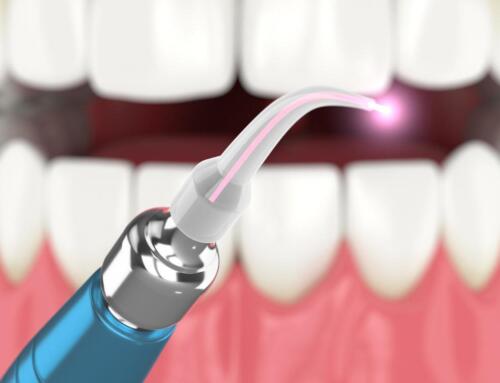
Cosmetic bonding transforms teeth with a process that can repair chips, gaps, and create a more symmetrical smile in just one visit! This versatile treatment uses composite resin—a durable, tooth-colored (white) material—applied directly to your teeth and shaped to perfection. It provides immediate results without the need for extensive preparation or removal of tooth structure.
At Imagine Dentistry in Charlotte, North Carolina, we provide personalized cosmetic bonding treatment, designed to fit seamlessly into your lifestyle. Dr. Ann Blaine Coambs has over 20 years of experience and has received a Charlotte Magazine Top Dentists Award for over 9 years running. Dr. Coambs utilizes her dental technology to create customized bonding treatment, helping patients achieve confident, beautiful smiles. Whether you’re correcting minor dental flaws or enhancing your overall smile appearance, cosmetic dental bonding may be the perfect solution for your dental goals.
What Is Cosmetic Bonding?
Cosmetic bonding, also known as dental bonding, is a procedure where tooth-colored resin material is applied to the surface of the tooth to improve its appearance. The material is carefully shaped, hardened with a special light, and polished to blend seamlessly with your natural enamel.
Unlike more invasive procedures, cosmetic bonding preserves most of your natural tooth structure. The process requires minimal or no removal of enamel, making it a more conservative option compared to veneers or crowns. Preserving more of your natural tooth structure is one of the primary advantages of choosing bonding.
Cosmetic bonding effectively addresses numerous dental concerns:
- Repairing chipped or cracked teeth
- Closing small gaps between teeth
- Improving the appearance of discolored teeth
- Making front teeth look longer or changing their shape
- Protecting exposed tooth roots due to gum disease
- Filling small cavities as an alternative to traditional fillings
The procedure works best for minor dental flaws and small repairs. For more extensive cosmetic concerns or structural problems, Dr. Coambs may recommend alternative treatments like Bioclear or dental veneers or crowns.
The Cosmetic Bonding Procedure
Understanding what happens during a cosmetic bonding appointment can help ease any anxiety you might have about the procedure. The process is straightforward and comfortable for most patients.
Your appointment begins with Dr. Coambs selecting a composite resin color matching your natural enamel. Next, the surface of the tooth is gently roughened and a conditioning liquid is applied to help the bonding material adhere properly. The tooth-colored material is then applied, molded, and smoothed to the desired shape.
Once the material is correctly shaped, a special ultraviolet light hardens the material. After the material hardens, Dr. Coambs further trims and shapes it, then polishes it until it matches the shine of your surrounding teeth. The entire process allows you to leave with immediate results.
One of the most appealing aspects of cosmetic dental bonding is it can be completed in a single visit. Unlike veneers or crowns, requiring multiple appointments and temporary restorations, you’ll walk out with your completed bonding treatment the same day.
Benefits and Limitations of Cosmetic Bonding
Cosmetic bonding offers numerous advantages but also has some minor limitations compared to other cosmetic dental treatments.
The benefits of cosmetic bonding include its affordability compared to veneers or crowns, making it an excellent option for budget-conscious patients. The procedure is also quick and less invasive, typically completed in a single visit with minimal anesthesia. Additionally, bonding preserves more of your natural enamel than other cosmetic options.
However, cosmetic bonding may not be as long-lasting as other treatments. While bonding can last 5-10 years with proper care, veneers and crowns typically last longer. The composite resin material, though durable, isn’t as strong as porcelain and may be more prone to chipping or staining over time. For teeth with significant cosmetic issues or for patients seeking the most long-lasting solution, porcelain veneers or crowns might be more appropriate.
Dr. Coambs will help determine if bonding is right for you based on your specific needs, goals, and budget. For many patients, bonding offers an ideal balance of affordability, convenience, and aesthetic improvement.
Enhance Your Smile with Cosmetic Bonding
If you’re interested in learning how cosmetic bonding can improve your smile, we invite you to schedule a consultation with Dr. Coambs. During your visit, she’ll evaluate your teeth, discuss your aesthetic goals, and determine if bonding is the right solution for your unique situation.
At Imagine Dentistry, Dr. Ann Blaine Coambs brings over 20 years of experience along with Charlotte Magazine’s Top Dentist Award from 2016 to 2024 and Nextdoor Neighborhood Favorite Award from 2019 to 2024. We offer financing options for patients seeking to enhance their smiles with cosmetic bonding treatments. To schedule your consultation and learn more, call us at (704) 540-7600 or complete our contact form.
Frequently Asked Questions
Cosmetic dental bonding is a procedure where a tooth-colored composite resin is applied to a tooth’s surface to improve its appearance. This resin is bonded to the tooth using a special bonding agent, making it blend seamlessly with the natural teeth. The dental bonding procedure requires minimal removal of tooth enamel and is a more conservative option than veneers or crowns. It can fix chipped teeth, tooth shape issues, and even close gaps between teeth, leaving you with a beautiful, functional smile.
The longevity of tooth bonding typically ranges from 5 to 10 years, depending on various factors such as your oral habits and the type of bonding used. While it is durable, a bonded tooth can be more susceptible to chipping or staining over time compared to porcelain veneers. Proper care, like regular brushing, flossing, and avoiding habits like nail-biting, can help prolong the life of your cosmetic dental bonding. It’s also essential to address tooth decay or damage promptly to maintain healthy teeth.
Yes, cosmetic bonding is an excellent option for repairing chipped teeth. A bonded tooth can be restored to its original shape using tooth-colored composite resin, providing a natural look. The procedure is quick and non-invasive, making it ideal for minor chips or cosmetic issues. During the dental bonding procedure, the dentist molds the resin to match the natural contours of your teeth, ensuring a smooth, even result that blends perfectly with the surrounding tooth enamel.
Dental bonding can improve the appearance of discolored teeth by using a tooth-colored composite resin that can be shaped and molded to match the natural color of your teeth. This cosmetic dental procedure effectively conceals stains, enhancing the tooth’s overall appearance without the need for more extensive treatments like crowns or veneers. Additionally, dental bonding is a more affordable and quicker solution, making it a great choice for anyone looking to brighten their smile with minimal disruption to healthy teeth.
Cosmetic bonding can be a great alternative to veneers, especially for those with minor dental imperfections. Unlike veneers, which require a portion of the tooth enamel to be removed, cosmetic bonding preserves more of the natural tooth structure. For minor issues such as chipped teeth, gaps, or slight discoloration, dental bonding offers a less invasive and more affordable solution. However, for more extensive cosmetic concerns or for long-term durability, veneers might be a better option. Your dentist will help determine the best choice based on your needs.

LEGALLY REVIEWED BY:
Dr. Ann Blaine Coambs is a general dentist practicing in Charlotte, NC, with over a decade of clinical experience. A graduate of Rice University and the University of Texas School of Dentistry, she completed her residency at CMC Hospital (Atrium Health) and has served the Charlotte community since 2012. Earned the Fellowship Award from the Academy of General Dentistry – an honor held by fewer than 6% of general dentists nationwide.
Dr. Coambs is known for her patient-focused approach, blending advanced dental techniques with warmth and precision.
- FACT CHECKED
EDITOR








